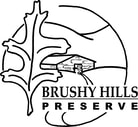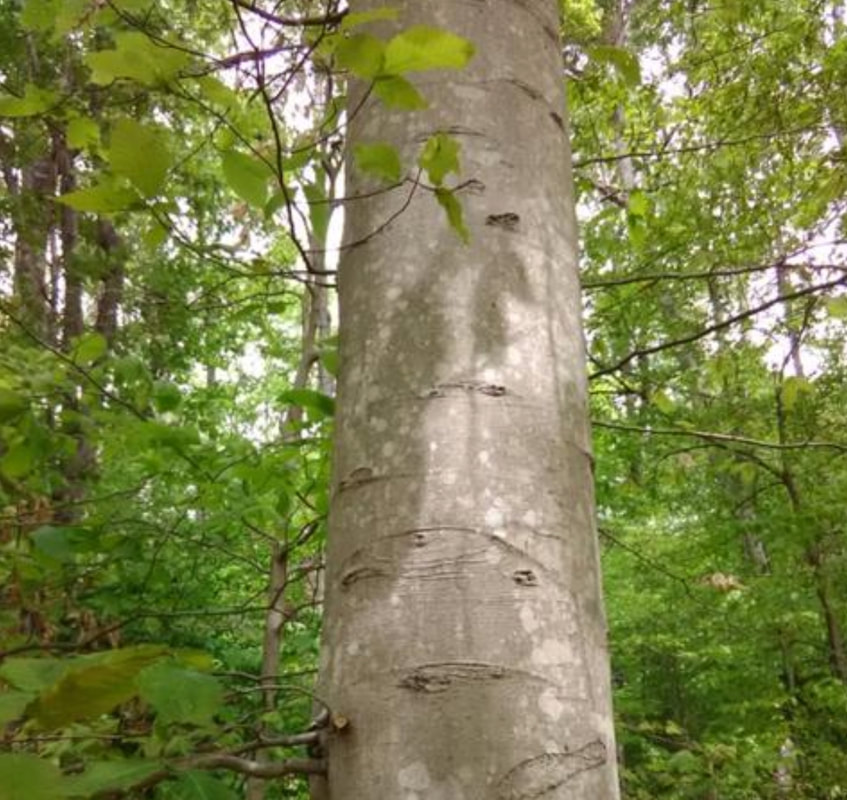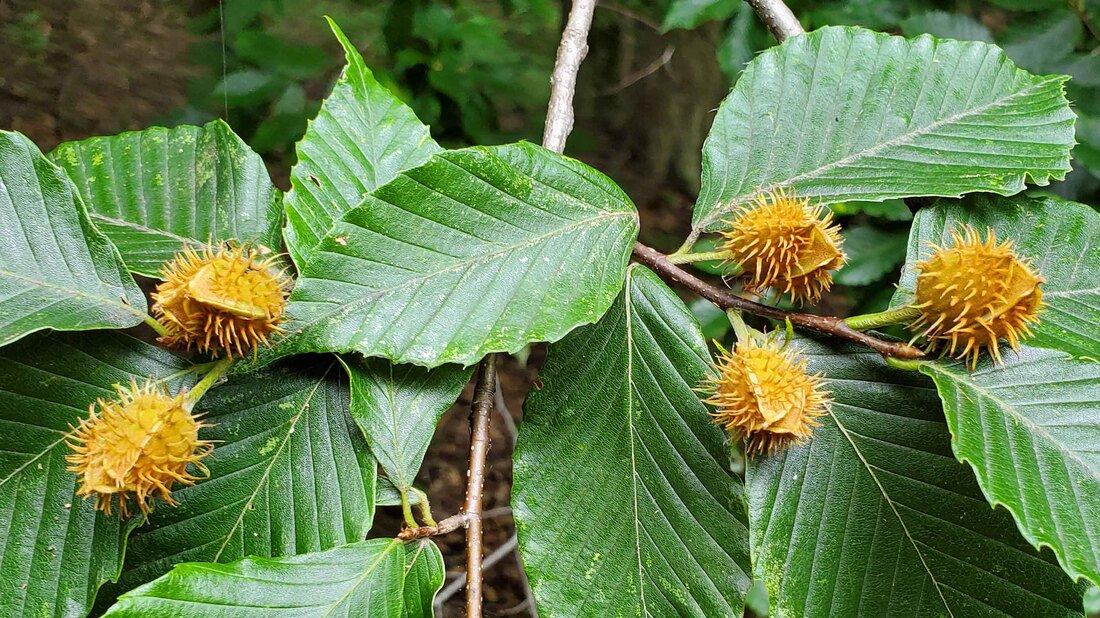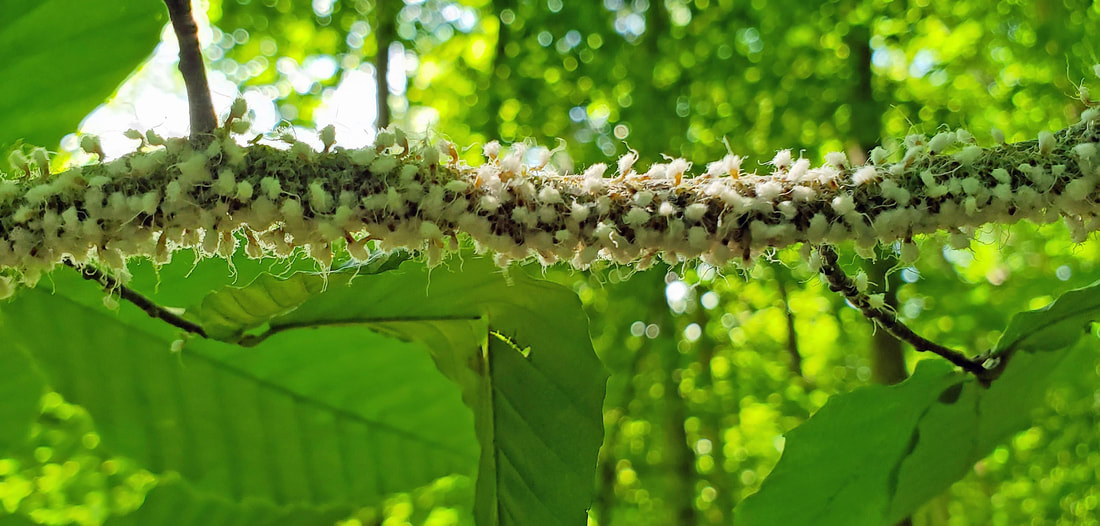American Beech
Scientific Name: Fagus grandifolia
— pronounced FAG-us gran-dih-FOH-lee-uh
— Fagus, Latin for "beech," from the Greek phagein, meaning "to eat" (the
nuts are edible)
— grandifolia from Latin grandis, large, and folium, leaf
Beech Family (Fagaceae), which also includes oaks and chestnuts
Other Common Names: Beechnut Tree, Red Beech, White Beech
— pronounced FAG-us gran-dih-FOH-lee-uh
— Fagus, Latin for "beech," from the Greek phagein, meaning "to eat" (the
nuts are edible)
— grandifolia from Latin grandis, large, and folium, leaf
Beech Family (Fagaceae), which also includes oaks and chestnuts
Other Common Names: Beechnut Tree, Red Beech, White Beech
The bark of the American Beech is its most distinctive feature: smooth, thin, and light gray throughout the tree’s life.
The leaves are simple in form & pointed, with parallel veins, each vein ending in a sharp tooth at the leaf margin. Leaves are shiny green above, paler below, and
somewhat papery to the touch.
The American Beech holds its leaves through the winter, pale tan in color amid winter’s gray. They provide cover for birds.
The small nuts are found in pairs within a woody husk covered with spines.
The buds are very long, light brown, slender, and sharply pointed.
Photos and more ID help: VA Tech dendrology sheet
American Beech prefers moderately moist habitats. It occurs in rich woodlands, wooded slopes, bluffs, shady riverbanks, and better-drained areas in swamps. Because its bark is thin, the American Beech is highly vulnerable to damage by fire; it’s found only in areas that have not burned in a long time. It is
shade-tolerant; seedlings and saplings can persist for years as understory plants, quickly growing to full size when a gap develops.
American Beech is found scattered throughout the lower elevations of the Preserve.
Interesting Facts:
The leaves are simple in form & pointed, with parallel veins, each vein ending in a sharp tooth at the leaf margin. Leaves are shiny green above, paler below, and
somewhat papery to the touch.
The American Beech holds its leaves through the winter, pale tan in color amid winter’s gray. They provide cover for birds.
The small nuts are found in pairs within a woody husk covered with spines.
The buds are very long, light brown, slender, and sharply pointed.
Photos and more ID help: VA Tech dendrology sheet
American Beech prefers moderately moist habitats. It occurs in rich woodlands, wooded slopes, bluffs, shady riverbanks, and better-drained areas in swamps. Because its bark is thin, the American Beech is highly vulnerable to damage by fire; it’s found only in areas that have not burned in a long time. It is
shade-tolerant; seedlings and saplings can persist for years as understory plants, quickly growing to full size when a gap develops.
American Beech is found scattered throughout the lower elevations of the Preserve.
Interesting Facts:
- Now found only in eastern forests, American Beech is thought to have flourished over most of North America until the last glacial period. It’s the only Fagus species in the western hemisphere, out of ten species worldwide.
- This species grows slowly and may live 300-400 years. It begins seed production at about age 40 and is one of the main nut producers in the eastern deciduous forest, feeding many mammal and bird species.
- In mid to late summer in Brushy Hills, you might see a Beech twig that appears to be covered with snow: most likely a mass of Beech Woolly Aphids (Grylloprociphilus imbricator). And if you get close enough to disturb them, they’ll all raise their posteriors and wag them quickly back & forth. To humans this defensive maneuver is a comical sight, which has led to the nickname Boogie-Woogie Aphid. Watch video of "dancing" aphids.



